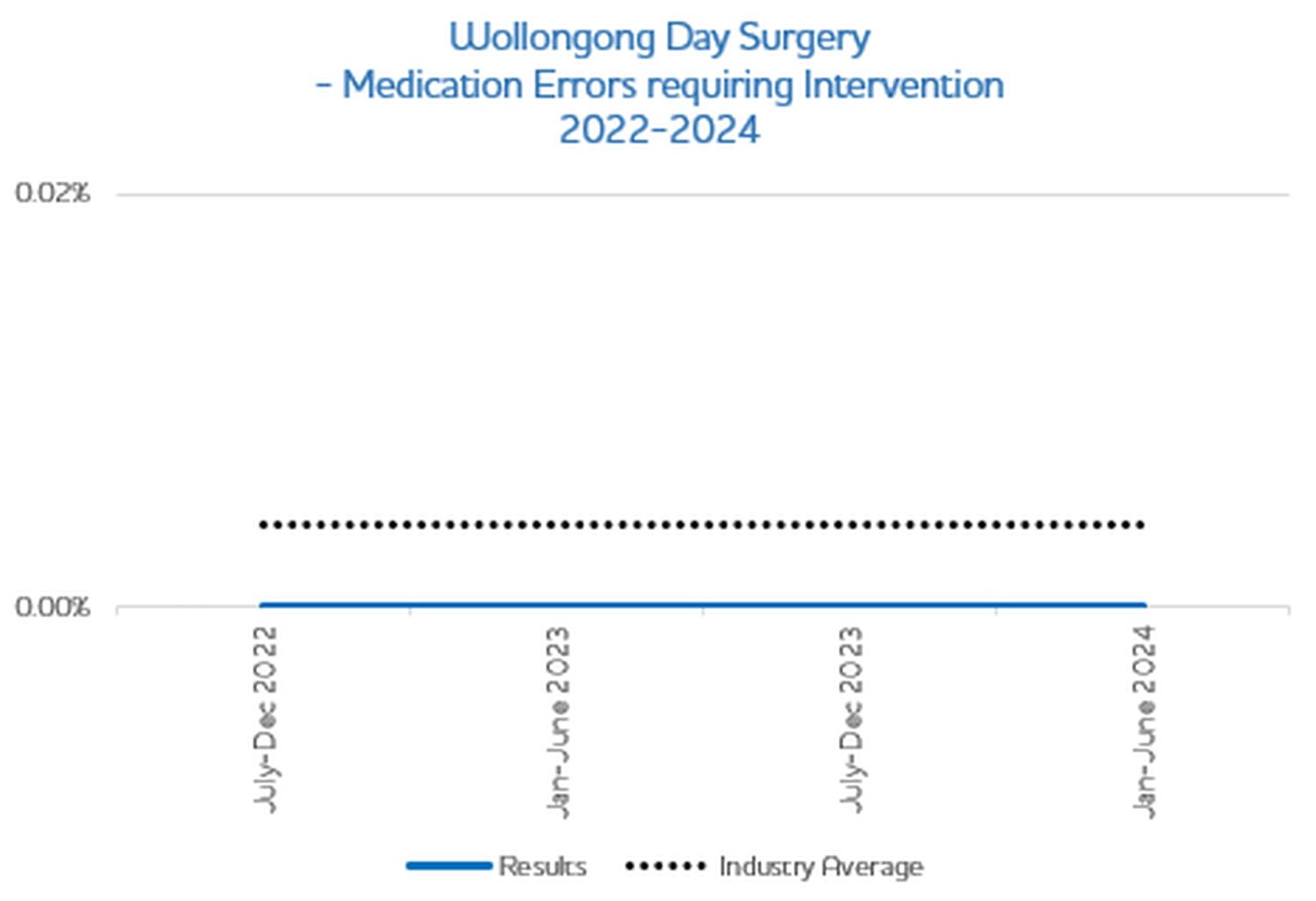Patient Outcomes
As part of our quality framework, we regularly measure and benchmark ourselves against a range of 'Clinical Indicators'.
In accordance with the National Safety and Quality Health Service Standard 2: Partnering with Consumers, the contents of this page have been reviewed by Healthe Care Consumer Advisory Committees.
Hand Hygiene
Wollongong Day Surgery Hand Hygiene Compliance
Hand hygiene (or hand washing) is one of the best ways to stop infections so, as a priority, we educate and train all caregivers in the World Health Organisation’s (WHO) “five moments” for hand hygiene. We also audit our staff and provide our results to Hand Hygiene Australia (HHA) to compare us against other hospitals.
Wollongong Day Surgery ranks in line with the national targets for hand hygiene. Our auditors complete compliance audits on a regular basis and submit data three times a year. We also participate in the national hand hygiene strategy to continually improve our rates.
The graph below shows that Wollongong Day Surgery's Hand Hygiene compliance rates are in line with the Industry benchmark.
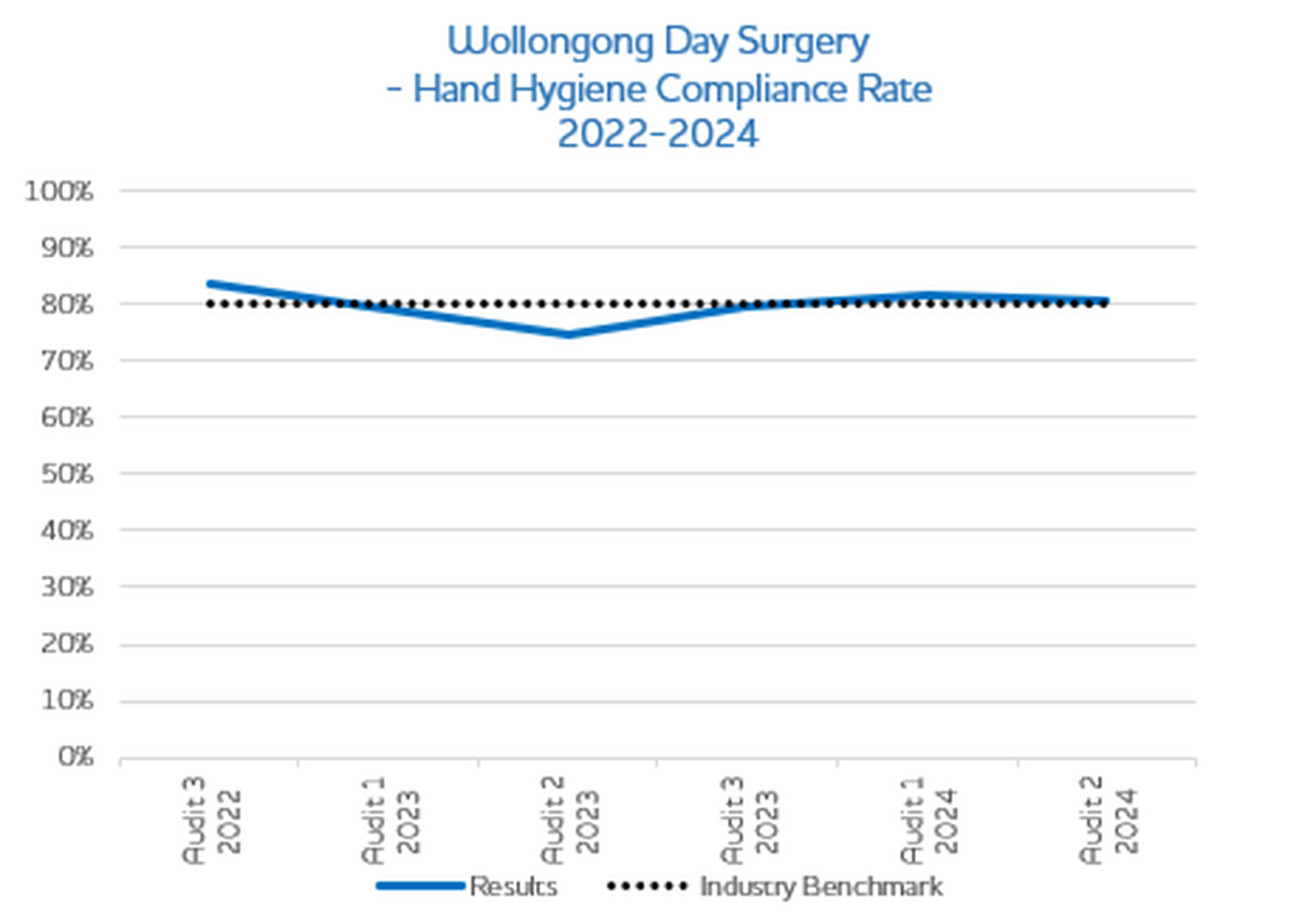
Inpatient Falls with Injury Requiring Intervention
Wollongong Day Surgery Patient Fall Rates
A fall in a hospital is when a patient suddenly and unintentionally falls to the ground. This can happen in a hospital setting for a number of reasons, such as a change in medication, the after effects of an anaesthetic, or just because the surroundings are unfamiliar. Falls can injure patients and affect their recovery and independence.
This graph below shows the number of patients that sustain a fall that caused an significant injury as a percentage of total patient bed-days (the number of days that all patients spend in hospital). Wollongong Day Surgery achieves a lower rate (better) than the industry average.
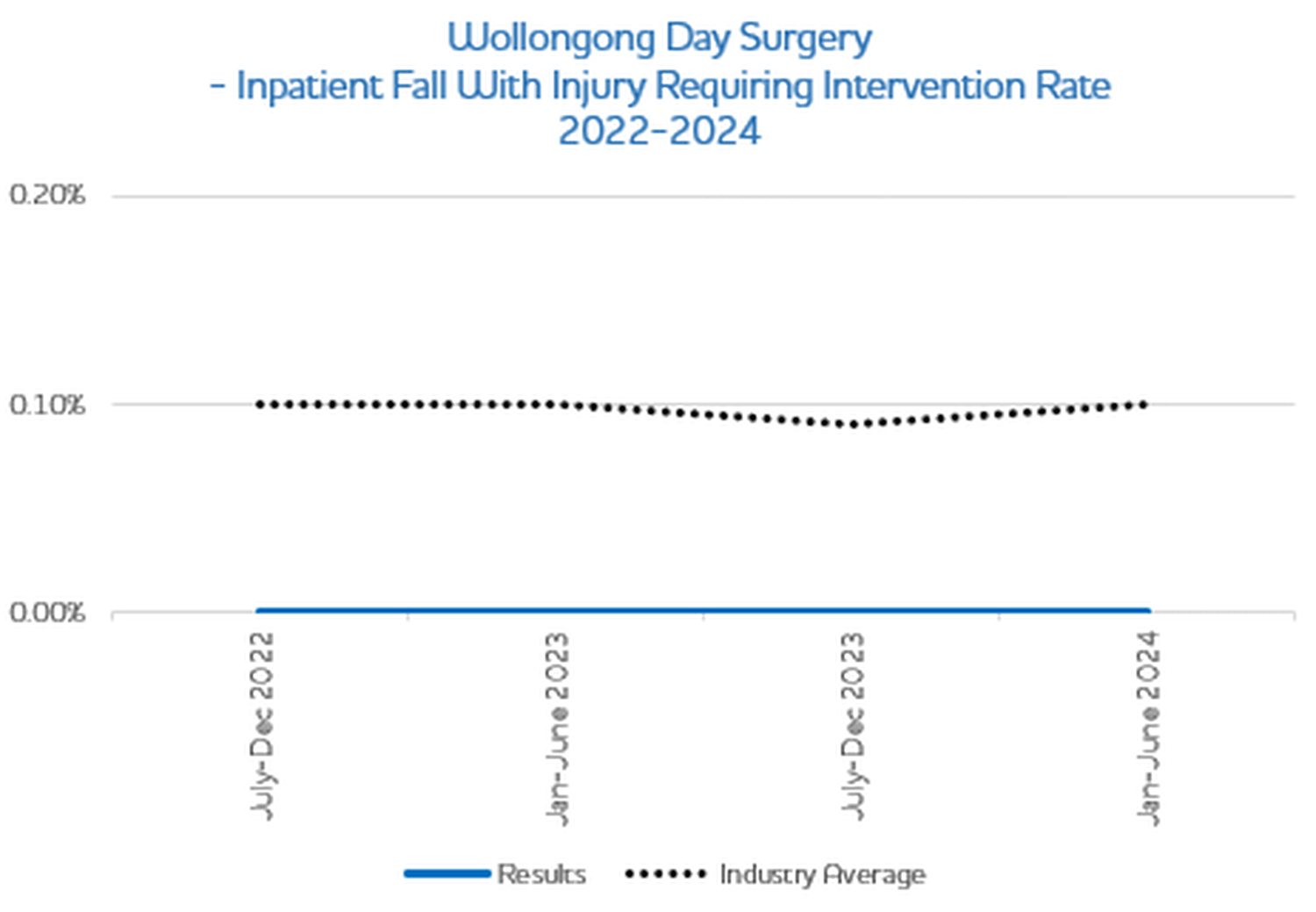
Unplanned Transfer or Overnight Admission
Wollongong Day Surgery Unplanned Transfer or Overnight Admission
Day surgery is generally associated with minor procedures with the intention of being discharged on the same day. On occasion patients may require a transfer to a general hospital and/or overnight admission for specialised care which may be due to complications, patients’ pre-existing diseases or conditions and the nature of the disease or condition being treated
Wollongong Day Surgery's rate is lower (better) than the industry average.
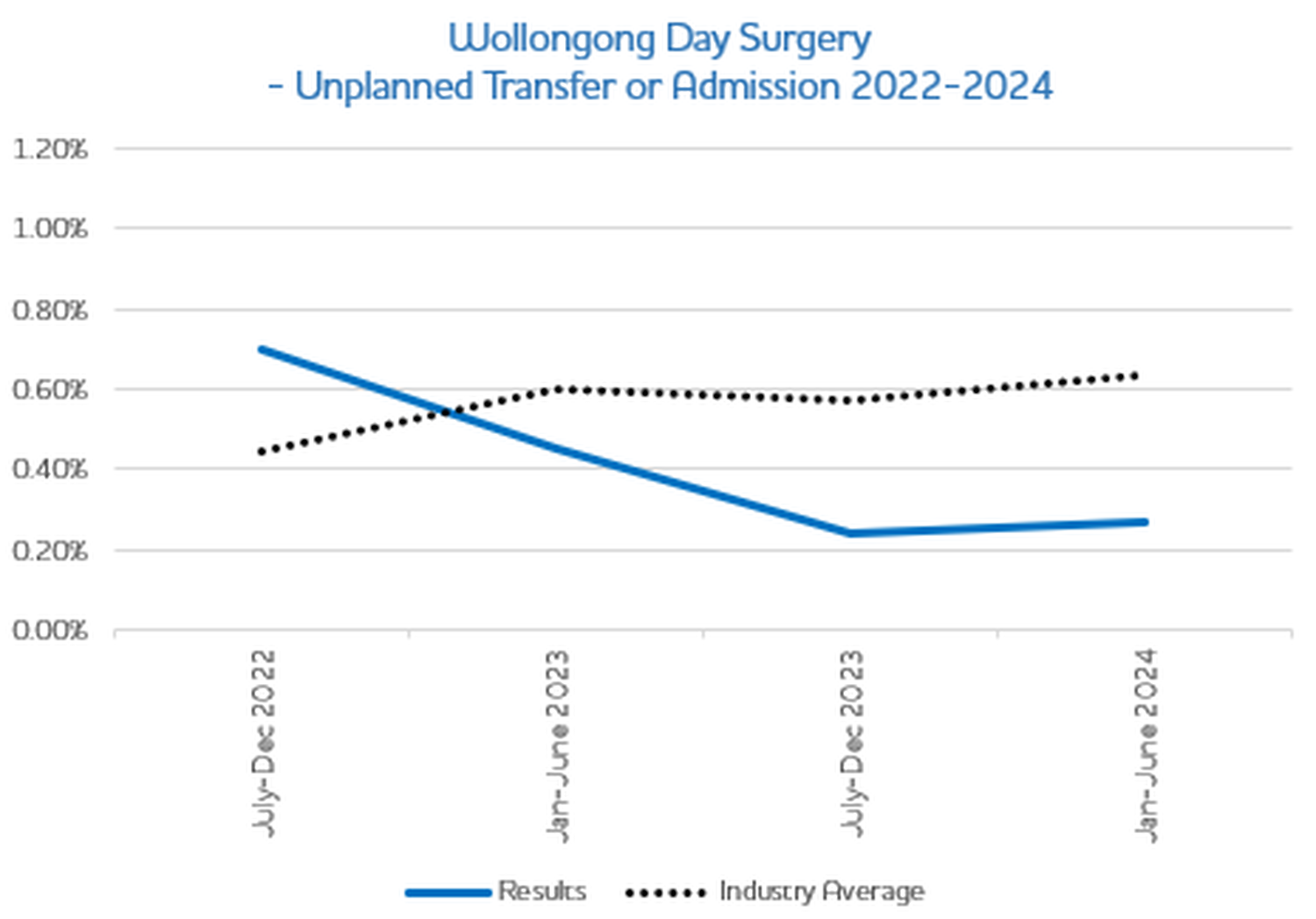
Unplanned Returns to Operating Theatre
Wollongong Day Surgery Unplanned Returns
Wollongong Day Surgery's doctors undertake surgery in many specialty areas, which range from minor procedures to more complex day surgery requiring specialised treatment. We monitor our patient outcomes by comparing any unplanned returns to the operating theatre during the same day as the initial procedure to other Australian hospitals nationally. The aim is to reduce returns to the operating theatre where possible; however there are many factors which influence this, and in some cases it is necessary to have further surgery to save a life.
Unplanned returns to the operating theatre during the same day are frequently due to complications, for example to treat bleeding or other problems occurring early after the operation. Some complications following surgery are to be expected due to patients’ pre-existing diseases or conditions and the nature of the disease or condition being treated. Unplanned returns to the operating theatre are reported and clinical outcomes analysed. Recommendations are actioned and monitored to ensure improvements are made where possible.
The graph below shows the number of patients who had a surgical procedure or operation and required an unplanned return for further surgery during on the same day as the initial procedure. Wollongong Day Surgery's rate is lower (better) than the industry average.
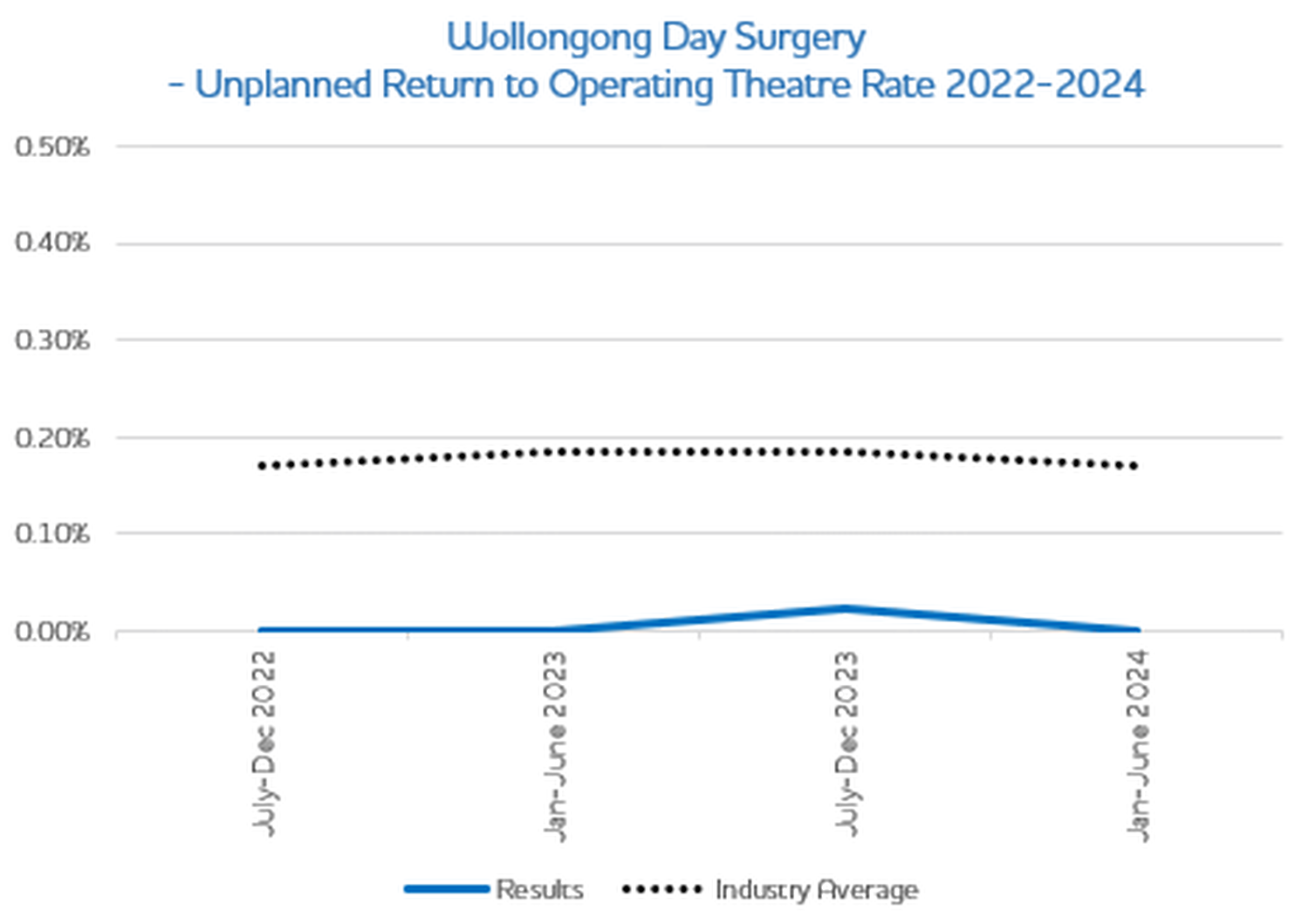
Medication Errors
Wollongong Day Surgery Medication Error Rate
Medication errors include any errors in the dispensing and administration of medication that require a medical intervention. The graph below shows the number of patients that required an intervention as a consequence of a medication error. Wollongong Day Surgery's rate is below with the industry average.
We are working to reduce this through a number of medication safety initiatives, including the adoption of the National In-Patient Medication Charts endorsed by the Australian Commission on Safety and Quality in Health Care (ACSQHC), and implementing a standardised patient labelling system when administering injectable medicines. Medication incident rates and outcomes are monitored across our hospital to determine if our initiatives are reducing the error rate and level of patient harm.
